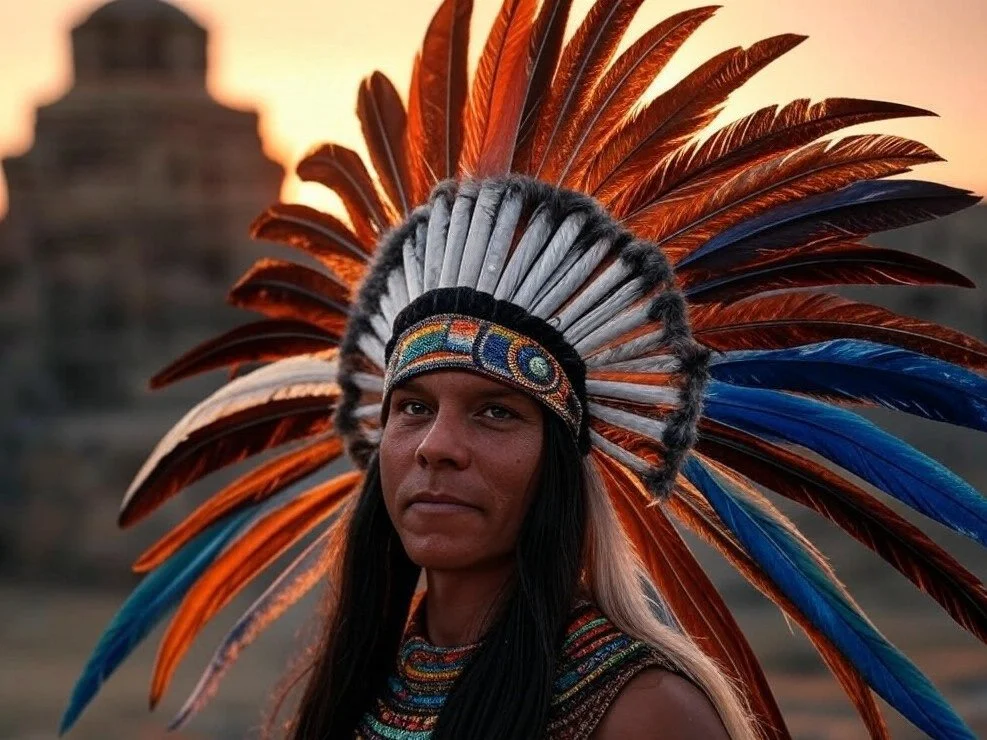Feathers have held deep symbolic and practical significance in ancient cultures across the world. Revered for their beauty, rarity, and connection to the skies, they were often associated with divine power, spiritual communication, and social status. From elaborate Aztec headdresses to sacred Native American rituals, feathers played an essential role in cultural expression and religious practices.
Feathers in Aztec Culture: Symbols of Divine Authority
The Aztecs placed immense value on feathers, particularly those of the resplendent quetzal. These iridescent green feathers were reserved for nobility and high-ranking priests, symbolizing divine favor and power. Elaborate headdresses, such as the famous Penacho of Moctezuma, were worn by rulers to signify their connection to the gods. Feathers were also used in ceremonial clothing, military banners, and sacred offerings to deities.
Native American Feather Traditions: Spiritual and Warrior Significance
Feathers were deeply significant in Native American cultures, symbolizing honor, strength, and communication with the spiritual world. Eagle feathers, in particular, were considered sacred, often awarded to warriors for acts of bravery. They were also used in ceremonies, such as the Sun Dance and healing rituals, to invoke divine guidance and protection. Feathers adorned headdresses, prayer sticks, and dreamcatchers, reinforcing their spiritual importance.
Ancient Egyptian Feathers: Justice and Truth
In ancient Egypt, feathers held a profound symbolic meaning in relation to Ma’at, the goddess of truth and justice. The feather of Ma’at was central to the weighing of the heart ceremony, where the deceased’s heart was measured against a feather to determine their purity. Feathers also appeared in Egyptian art and hieroglyphics as representations of balance, truth, and divine judgment.
South American Cultures: Feathers as Status and Ritual Elements
In the civilizations of the Andes and the Amazon, feathers were used in both practical and ceremonial contexts. The Inca and other indigenous groups crafted intricate featherwork capes and ornaments to signify rank and divine favor. Shamans used feather-adorned tools in healing rituals, believing that they could channel the spirits of birds to provide wisdom and protection.
Conclusion
Feathers were more than decorative elements in ancient cultures; they were symbols of power, spirituality, and social status. Whether worn by warriors, rulers, or priests, feathers carried deep cultural significance, bridging the gap between the human and the divine. Their enduring legacy can still be seen in modern ceremonial traditions, highlighting their timeless importance across civilizations.







